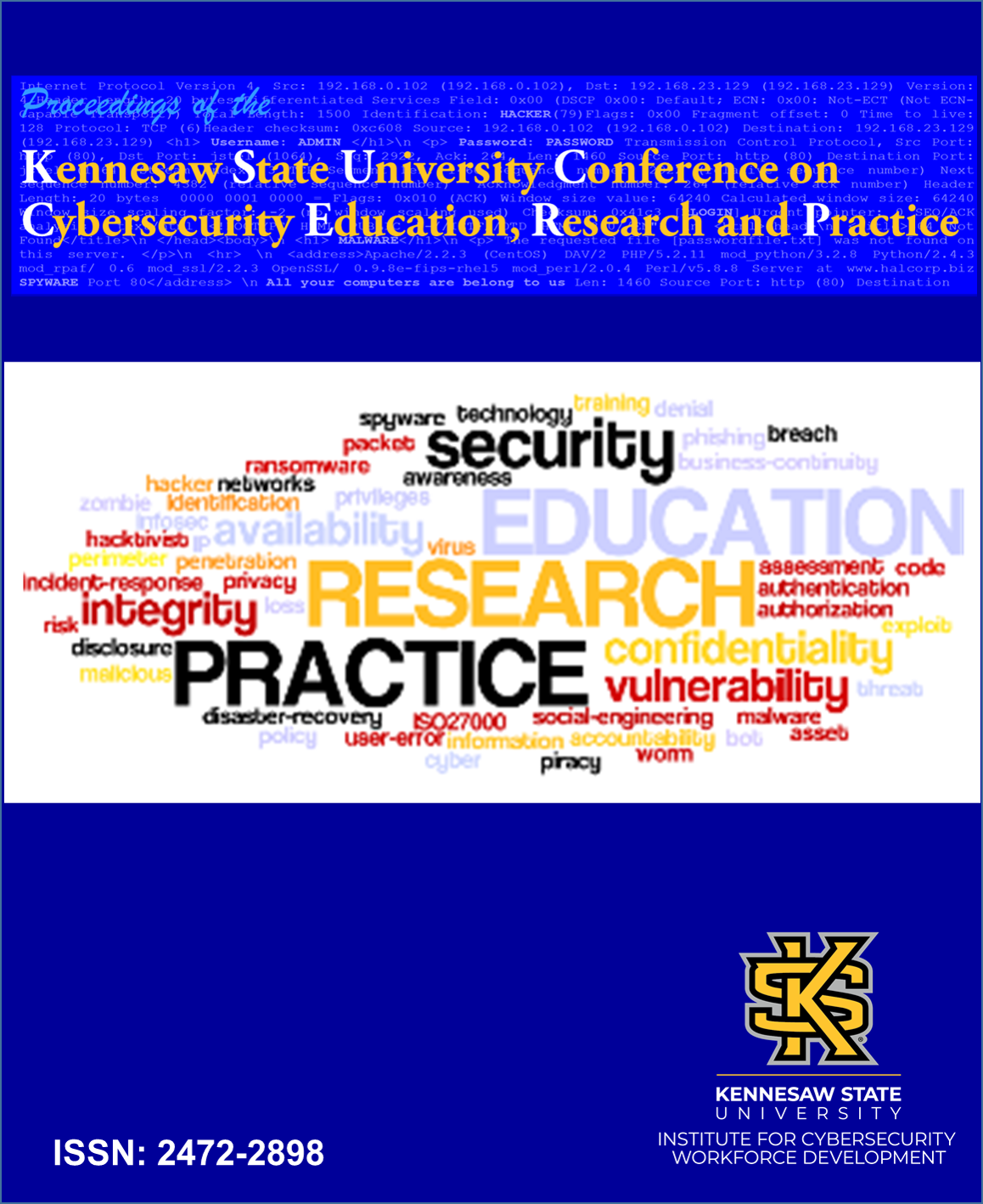Cognitive Load, IS use and Cyberscurity behavior
Start Date
23-10-2020 1:30 PM
End Date
23-10-2020 2:00 PM
Location
Zoom Session 2 (SunTrust Track)
Abstract
A key organizational mechanism used to manage IT security relates to security policies and procedures. Such procedures tend to be prescriptive and assume all individual use of technology to be rational and similar. However, recent research in information use identifies three clear and distinct types of IT use that depends on technology familiarity and task at hand. The three types of uses (initial, continued and novel use) draw on different types of cognitive load. This research draws on the theory of cognitive load from psychology to understand the impact on behavior and performance of actions Our primarily focus is on post- adoptive (continued and novel use) behavior, since that is what most users tend to do, since that is where much of the organizational security instructions happen. We propose using NeuroIS methods to evaluate and test each of the components of the theory.
Cognitive Load, IS use and Cyberscurity behavior
Zoom Session 2 (SunTrust Track)
A key organizational mechanism used to manage IT security relates to security policies and procedures. Such procedures tend to be prescriptive and assume all individual use of technology to be rational and similar. However, recent research in information use identifies three clear and distinct types of IT use that depends on technology familiarity and task at hand. The three types of uses (initial, continued and novel use) draw on different types of cognitive load. This research draws on the theory of cognitive load from psychology to understand the impact on behavior and performance of actions Our primarily focus is on post- adoptive (continued and novel use) behavior, since that is what most users tend to do, since that is where much of the organizational security instructions happen. We propose using NeuroIS methods to evaluate and test each of the components of the theory.


